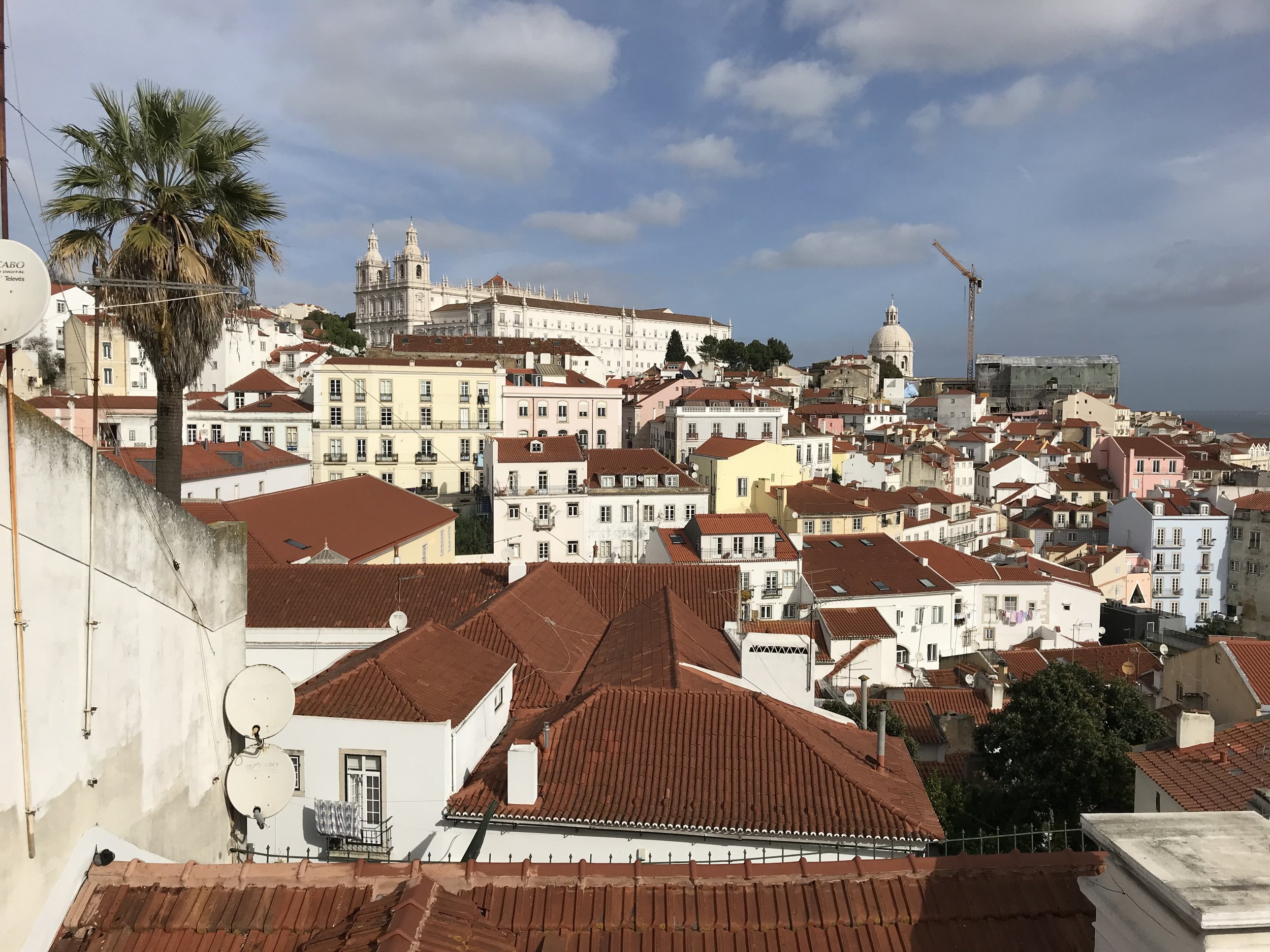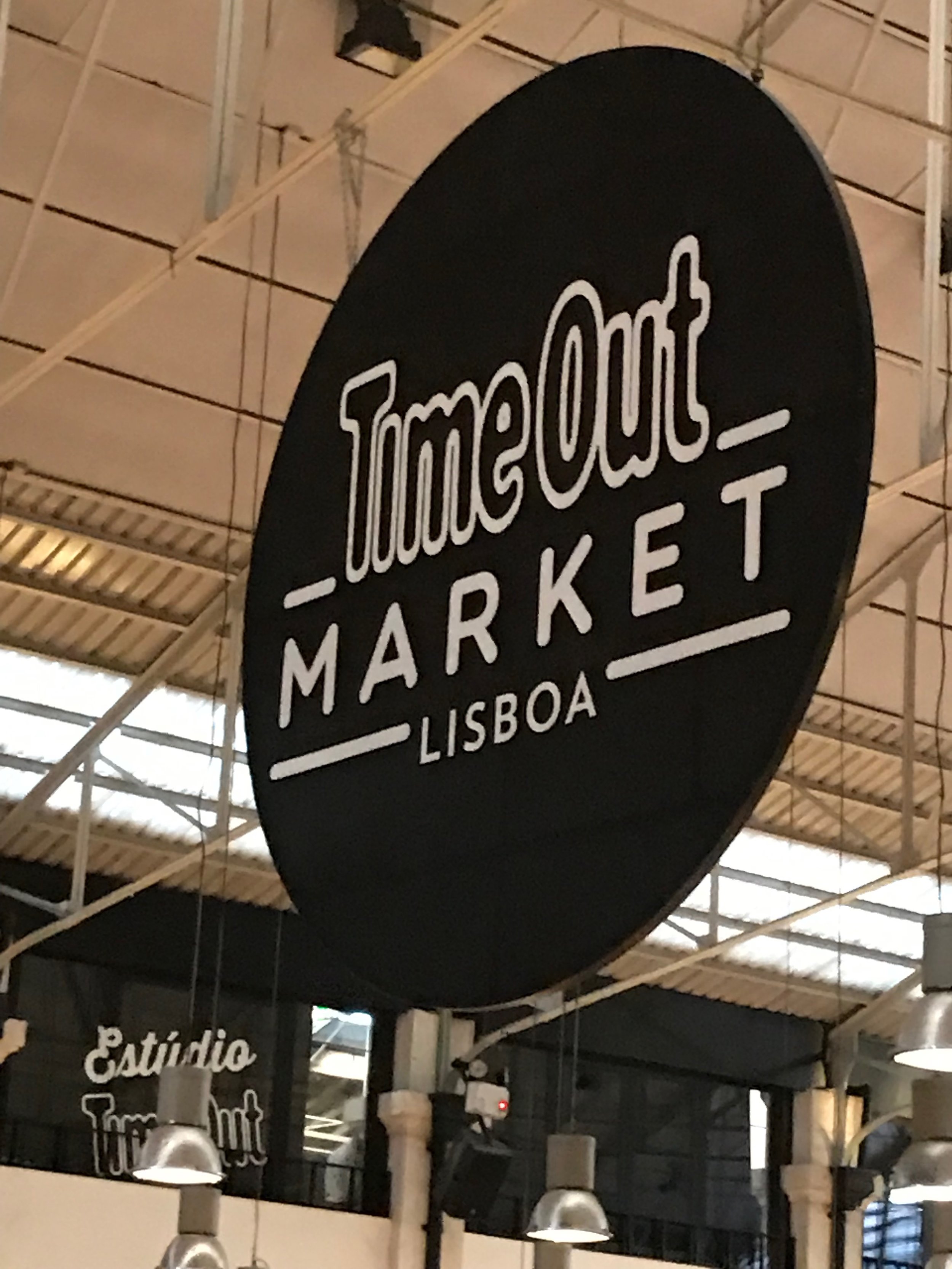Portugal – 1983, 2002, 2018
We’ve made three trips to Portugal, the first in 1984 when we spent several weeks traveling through Spain, Portugal and Morocco, with our sons David and Michael. On that first trip, we spent several days in Lisbon and then traveled south along the rugged Atlantic coast to the Algarve, including visits to Sagres, Faro and Lagos.
In Lisbon we visited the Padrao dos Descobrimentos, or Monument of Discoveries, on the Tagus River, and were fascinated with the fact that Portugal was the first European power to build a colonial empire, beginning in the fifteenth century. Portuguese maritime explorers, including Vasco de Gama, Ferdinand Magellan and Pedro Cabral, led maritime expeditions that discovered and mapped the coasts of Africa, Canada, Asia and Brazil.
We had wanted to spend more time in Portugal, but it was just a side trip from Spain, and after a few days we headed back to Spain and continued our journey through the south of Spain.
Our second trip was in 2002, when Misti and I flew into Lisbon, spent several days there, rented a car and drove through the western and northern parts of the country, with the primary purpose of exploring the Douro Valley wine region.
The European Union’s (EU) currency, the euro, was introduced in 1998, fourteen years after our first visit to Portugal; our second visit, in 2002, was four years after the euro was introduced. Portugal had always been regarded as one of the “poorer” of the EU countries, and on our first visit in 1983 prices for hotels, food, and everything else, were quite reasonable. That changed on our second visit, when prices, while still lower than the more affluent EU countries, were significantly higher than in 1983.
In Lisbon we enjoyed some great Portuguese dinners, explored the Alfama, its name coming from the Arabic al-hamma or “baths” and just wandering the streets of this charming city.
After leaving Lisbon, we stayed one night in Coimbra, known for the University of Coimbra, founded in 1290, making it the oldest academic institution in the Portuguese-speaking world.
We next drove on to Curia, a city renowned for its healing mineral waters. The name “Curia” derives from the “aqua Curiva,” or curing water, which the Romans discovered more than a thousand years ago. The city is also famous for its gastronomy, especially the “leidao da Bairrada” or suckling pig. Curia is located in the Bairrada, one of Portugal’s most popular wine growing districts.
We spent several nights in Porto, Portugal’s second largest city, located on the Douro river estuary. Porto is one of the oldest European settlements, dating back to the Roman Empire. Ribiera, its medieval center, was named a World Heritage Site by UNESCO. The name of the country, Portugal, evolved from the city’s name. Porto is perhaps most famous for the Port wines which are produced in the Douro Valley
After Porto, we drove north through the Douro wine region, and made our way into the Galicia province of Spain where we spent the next ten days.
Our third Portuguese trip was in November, 2018. For the past few years we had been traveling a great deal, with trips to Europe, South America and Australia, mostly by car. Misti was recovering from a bout with pneumonia, and we decided a cruise would be easier on her and a nice way for both of us to relax.
We searched online for cruises and chose Oceania’s Marina, a sixteen day cruise departing from Lisbon, going to Seville, the Canary Islands and then across the Atlantic to Brazil. Since we did a last minute booking, we got a great price for a suite at a reasonable cost. We used frequent flyer miles on British Air for our flight to Lisbon and United miles for our return from Rio de Janeiro.
We only spent three nights in Lisbon but that was enough to get a good feel for the city, and realize how much it had changed from our previous two visits. The main change was more tourists, and an accompanying increase in tourist facilities, including restaurants. The increase in tourists is partly due to Lisbon becoming a cruise ship hub, along with Barcelona. But since we were visiting in late November, nothing was very crowded and we had no problems getting into the better restaurants.
On Hotels.com, Misti booked the Avenida Palace Hotel, centrally located in the Rossio District. It’s a grand dame, five star hotel, that is part of the city’s historic heritage. It’s more than a century old, but recently renovated bringing it up to modern comfort standards. I recommend this hotel highly to anyone planning a visit to Lisbon. The city had just completed installation of their Christmas lighting all along the avenue where the hotel is located; a nice welcome for us.
We spent much of the first day touring the Alfama, Lisbon’s oldest neighborhood, set on a series of hills and offering views overlooking the city. We taxi’d up to the top, walked down, and then took the famous tram 28, an inexpensive (three euro) thirty minute tour of the Alfama, Baixa and Estrela neighborhoods.
The vintage wooden tram goes for half an hour through Lisbon’s narrow and curvy streets, traveling over and through the Alfama. The tram is always crowded, with standing room only, but we were lucky to get one available seat, for Misti, and I held on for dear life as it rattled through traffic blasting its horn non-stop.
We had an excellent dinner at the As Velhas, means two old ladies, restaurant, recommended by the hotel’s concierge, where we met a couple who were driving from Lisbon to their home in Stockholm, and we discussed their driving route through Spain.
The next day we used Uber to visit several districts including the waterfront and the Time Out market, which is filled with every imaginable type of restaurant. We found that while taxi’s are cheap, and honest because they always used their meters, Uber seemed to be easier and less expensive, and enabled us to charge directly to our credit card.
When we visited Lisbon n 1984 we remembered that we stayed at the York House hotel near the waterfront. We looked it up online, saw that it was still operating, and went there to walk down memory lane. We chatted with a guest who said he had lived there since 1983.
For our last night in Lisbon we went to Parreirinna Alfama, a restaurant that is one of the oldest Fado clubs in Lisbon. Fado, which in Portuguese means destiny or fate, is a music genre that is characterized by mournful songs, often about the sea or life of the poor. It was our first Fado experience and we loved it. This was a small venue, maybe thirty or forty people, a good show and the food was excellent. We recommend it highly to anyone planning a visit to Lisbon. It was a nice way for us to say goodbye to Lisbon.
Art Faibisch
November, 2018































